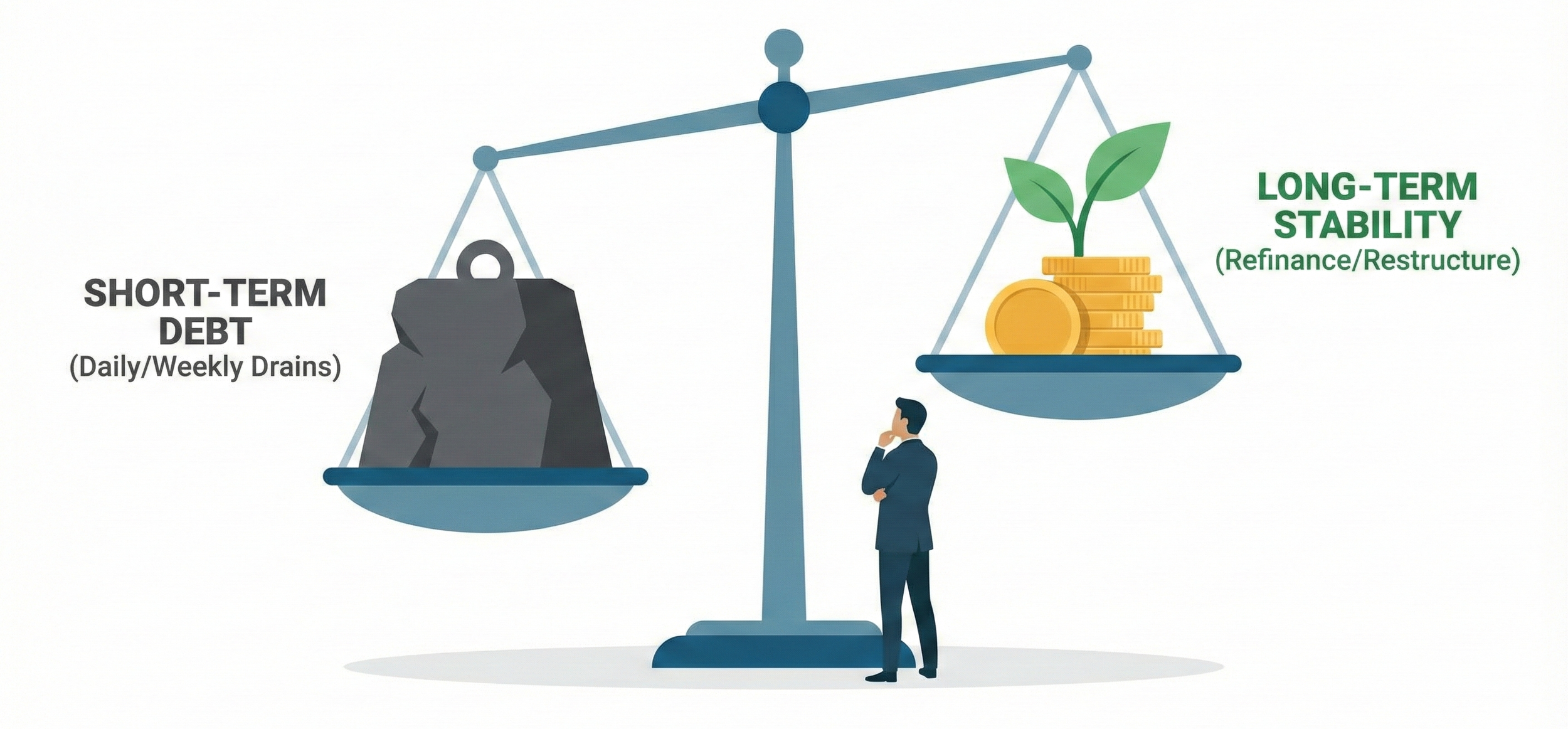Bernarsky Advisors is a preferred partner with BayFirst National Bank.
BayFirst National Bank, Member FDIC, Equal Housing Lender NMLS ID 806183
BayFirst is one of the top SBA 7a Loan originating banks in the U.S.A.
This application and pre-qualification will not affect your personal or business credit.
Documents required to start application: 1) Driver’s license copy, 2) Last 2-years of business tax returns,
3) Most recent personal Federal Tax Return, and 4) Last 12-Months of Business Banking statements
What is the Small Business Administration 7a “Express” Loan Program?
This SBA 7(a) “Express” Loan is the SBA’s quickest and most popular small business loan.
It provides up to $500,000 for working capital within days instead of months, and without all the paperwork of a larger SBA loan.
With lower interest rates and longer repayment terms than alternative online lending products SBA 7a “Express” loans are ideal for those with good personal and business credit scores and can be prequalified quickly.
Application takes 5-minutes or less to complete!
General Range of SBA 7a “Express” Loan Terms:
Interest rates are lowest market rates being offered (approx. 12% APR currently)
Typical Amortization (payback) of 10-years
Monthly payment
Application to closing typically 15 to 20-business days
Pre-Qualification decision range in 2 to 3-business days
Documentation required at time of Application:
Driver License
Last 12-months of business bank statements
Two Years most recent business tax return
Most recent personal Federal Tax return
Some of our latest articles about Business Finance & Strategy:
Every morning or perhaps every Friday, thousands of small business owners across the country wake up to the same digital reality check. Before they can review new orders, check on employee schedules, or pour a cup of coffee, they log into their business bank accounts to see how much cash vanished overnight. For many, the answer is a staggering sum, withdrawn automatically by multiple lenders, merchant cash advance providers, and business financing fintech platforms.
This is the trap of weekly (or daily) remittances, a phenomenon that turns profitable operational models into cash-poor nightmares. When a business owner stares at a balance that is constantly draining due to these high-frequency withdrawals, the psychological pressure to find a quick fix becomes overwhelming.
From analyzing the mechanics of short-term versus long-term business financing to weighing the true cost of capital, we provide a strategic roadmap for leveraging business debt to fuel growth rather than choking your business cash flow and operations.
Ultimately, the best scenario is indisputable: long-term, low-cost business debt. It provides the capital necessary for growth without the stranglehold of aggressive repayment. Business owners must resist the emotional urge to clear the books quickly and instead embrace the strategic advantage of amortization.
By keeping cash in the business rather than sending it to the lender, the owner retains the power to steer the company through uncertainty and toward long-term prosperity.
This article challenges the traditional "debt-free" dogma by examining the critical relationship between business loan terms and business operational survival. We will explore why extending your business debt payback period, even at the cost of more total interest paid over the long run, is often the superior strategy for maintaining a healthy business cash flow.
There is a silent crisis brewing beneath the surface of this survival story. For many business owners, the adrenaline of navigating the immediate crisis has faded, only to be replaced by a stark financial reality. The survival phase required capital, and for many, that capital came in the form of borrowed money.
We are now navigating a unique economic landscape where the stimulus has dried up, consumer habits have permanently shifted, and inflation has driven up the cost of goods sold. While the acute phase of the health crisis is over, the chronic phase of the financial crisis is just beginning for Main Street. The "new normal" is about managing a balance sheet that looks drastically different than it did 3 to 5-years ago.
Many business owners are finding that the very tools that saved them—loans, deferred payments, and credit extensions—are now the anchors dragging them down. The revenue may have returned, but the margin for error has vanished.
This section of the economic cycle requires a different mindset. It is no longer about raw survival; it is about stabilization. The businesses that will thrive in the coming decade are those that recognize the game has changed from a sprint to a marathon, and they are currently carrying too much weight in their backpacks to finish the race.
The weight of debt payments and the crushing reality of cash flow shortages can feel like a physical burden. You are likely reading this because the math is no longer working. The inflows are a trickle, the outflows are a flood, and the debt service is consuming every spare dollar of margin you manage to generate. It is a terrifying position, yet it is not a unique one. Countless success stories began as near-failures. The difference between bankruptcy and a legendary turnaround is rarely luck; it is a mixture of brutal honesty, strategic negotiation, and immediate, decisive action.
This guide is designed to walk you through the rigorous process of stabilizing a sinking ship. We will dismantle the complex mechanics of a financial turnaround into actionable, distinct phases. There are no quick fixes here, only hard work and disciplined financial engineering. By following these steps, you move from a state of panic to a state of control, eventually steering the enterprise back toward profitability and growth.
Every small business owner eventually faces the crossroads of capital. You need money to grow, to bridge a gap, or to seize an opportunity that just walked through the door. In that moment of need, the financial market presents you with two very different paths.
One path is paved with speed and accessibility but lined with aggressive demands that can choke your daily operations. The other path is steeper and harder to climb initially, but it leads to a plateau of stability and sustainable growth. This is not just a choice between two different loans; it is a choice between two fundamentally different philosophies of underwriting and two distinct futures for your business cash flow.
Understanding the difference between long-term, EBITDA-based underwriting and short-term, cash flow-only underwriting is the single most important financial lesson a founder can learn. It is the difference between renting money at an exorbitant daily rate and partnering with a creditor who views your success as their security.
To navigate this landscape, you must peel back the curtain on how these lenders think, how they measure risk, and why one model encourages aggressive timelines while the other fosters reinvestment.
For a thriving business owner, the sight of a balance sheet peppered with a dizzying array of different creditors, each with its own terms, conditions, and lien priority, is a red flag that demands immediate attention. This common scenario, often a byproduct of rapid growth or fragmented, opportunistic financing, creates a business financial landscape that is not only difficult to manage but actively works against your company's ability to secure favorable refinancing, obtain competitive costs of capital, and lock in the long-term payback periods essential for stable business cash flow.
This article is a deep dive into the corrosive effect of a fractured business debt liability structure. It is designed to equip you, the business owner, with a clear understanding of why a consolidated, streamlined balance sheet is the bedrock of future financial health and how the current complexity is undermining your company's true value and potential. We will explore the interconnected difficulties presented by a crowded creditor list and outline the compelling case for business financial consolidation.
Private business ownership is a journey fueled by passion, resilience, and, often, a healthy dose of optimism.
This entrepreneurial spirit is vital, but when that optimism morphs into a passive reliance on "hope" for critical financial outcomes, it becomes a liability.
For owners facing a complex landscape of business financing, relying on wishful thinking can be the difference between securing the capital needed for growth and facing a catastrophic failure.
It is time to replace vague aspirations with concrete, verifiable strategies and robust due diligence, especially when engaging with external business financial advisors and transactional brokers.
Cash flow is the lifeblood of operations. It dictates the ability to pay employees, purchase inventory, and invest in growth. While taking on business debt can be a necessary catalyst for expansion or a lifeline during lean times, a common and devastating pitfall is allowing that debt to create insidious cash flow leaks.
Specifically, debt with a payback period that is too short and a cost of capital that is too high can quickly turn an asset into a liability, plunging even a profitable business into a negative cash flow spiral. This article will break down this critical business challenge and provide actionable strategies for restructuring and refinancing to secure your company's financial future.
Many businesses initially rely on a patchwork of short-term, transactional financing solutions—credit cards, 12 to 24-month term loans, merchant cash advances MCAs, or short-duration lines of credit.
While these tools can be essential for bridging immediate gaps or seizing fleeting opportunities, an over-reliance on them can ultimately stunt growth and stifle cash flow. The time inevitably comes to move beyond this expensive, fragmented business financing approach.
This article explores the critical shift from transactional debt to a strategic capital partnership, focusing on how refinancing your business debt into a longer-term structure can fundamentally transform your cash flow and prepare your business for its next level of expansion.










